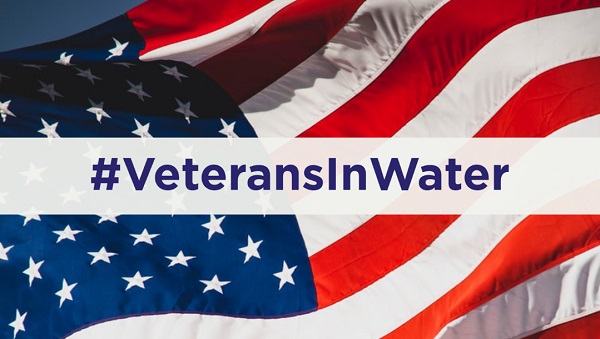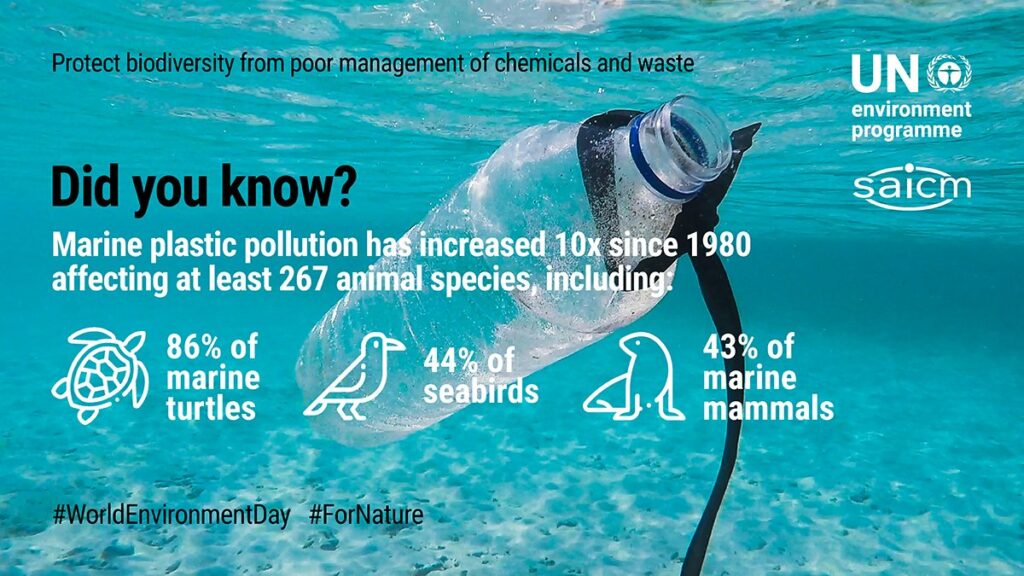Report on the Helix Water District’s Contributions to Sustainable Development Goals
The Helix Water District, a public utility serving 278,000 people in San Diego’s East County, has received Green Business certification from the California Green Business Network and the City of La Mesa. This certification recognizes the district’s significant operational alignment with several United Nations Sustainable Development Goals (SDGs) through its commitment to environmentally responsible practices.
Alignment with United Nations Sustainable Development Goals (SDGs)
The district’s initiatives demonstrate a strong commitment to sustainability, directly contributing to the progress of key SDGs. The certification required meeting extensive measures across seven categories: energy, pollution prevention, solid waste, transportation, wastewater, water, and community.
SDG 6: Clean Water and Sanitation & SDG 12: Responsible Consumption and Production
Helix Water District actively promotes the sustainable management of water resources and encourages responsible consumption patterns among its customers.
- Water-Use Efficiency Education: The district prioritizes educating customers on the responsible use of water, a key component of SDG Target 6.4 (substantially increase water-use efficiency).
- Promotion of Efficient Technology: It encourages the adoption of high-efficiency appliances, irrigation systems, and climate-appropriate landscaping, fostering sustainable consumption as per SDG 12.
- Leading by Example: The district models water efficiency at its own facilities through:
- Installation of low-water use toilets, faucets, and appliances.
- Use of efficient irrigation systems.
- Creation of a low-water use demonstration garden in 2020, which serves as a community educational resource on sustainable landscaping.
SDG 7: Affordable and Clean Energy
The district has made substantial investments in clean energy and energy efficiency, directly supporting SDG 7’s goal to ensure access to affordable, reliable, sustainable, and modern energy for all.
- Renewable Energy Supply: A power purchase agreement secures a renewable energy supply through 2030, and solar panels are installed at the Nat L. Eggert Operations Center, contributing to SDG Target 7.2 (increase the share of renewable energy).
- Energy Efficiency Improvements: The district has reduced its electric consumption by 15%, aligning with SDG Target 7.3 (double the rate of improvement in energy efficiency). Measures include:
- Facility-wide lighting retrofits and energy-efficient window coverings.
- Installation of lighting controls and programmable smart thermostats.
- Use of ENERGY STAR certified appliances.
- Economic Benefits: These initiatives have resulted in double-digit cost savings, as high as 18%, on electric commodity costs, demonstrating the financial viability of sustainable energy.
SDG 13: Climate Action & SDG 11: Sustainable Cities and Communities
Helix Water District is taking tangible steps to combat climate change and reduce the environmental impact of its operations, contributing to more sustainable communities.
- Reduction of Carbon Emissions: The district’s vehicle fleet is fueled by 100% renewable diesel, which has reduced carbon emissions by an estimated 500 metric tons per year, directly addressing SDG 13 (Climate Action).
- Transition to Electric Vehicles: The district is developing state-of-the-art, grant-funded charging infrastructure to support a transition to an all-electric fleet. This initiative will further reduce emissions and the city’s environmental footprint, in line with SDG Target 11.6.
SDGs Addressed in the Article
-
SDG 6: Clean Water and Sanitation
- The article focuses on the Helix Water District, a public water utility. It details the district’s efforts to promote responsible water use, implement water-efficient technologies (low-water use toilets, faucets, irrigation), and educate the community on water conservation.
-
SDG 7: Affordable and Clean Energy
- The article highlights the district’s “significant investments in clean energy,” including securing a renewable energy supply, installing solar panels, using 100% renewable diesel for its fleet, and transitioning to an electric fleet. It also mentions a 15% reduction in electric consumption through efficiency measures.
-
SDG 9: Industry, Innovation, and Infrastructure
- The district is upgrading its infrastructure to be more sustainable. This is shown by the retrofitting of facilities with energy-efficient lighting and windows, the installation of solar panels, and the development of “state-of-the-art charging infrastructure” to support its electric fleet.
-
SDG 11: Sustainable Cities and Communities
- As a public utility serving 278,000 people in San Diego’s East County suburbs, the district’s actions directly contribute to making the community more environmentally sustainable. The Green Business certification recognizes its efforts to reduce the environmental impact within its area of operation.
-
SDG 12: Responsible Consumption and Production
- The article describes the district’s commitment to reducing its consumption of natural resources. This includes reducing reliance on fossil fuels, decreasing electric consumption by 15%, and modeling and promoting water efficiency to decrease water consumption.
-
SDG 13: Climate Action
- The district’s actions directly address climate change by reducing greenhouse gas emissions. The article explicitly states that fueling its fleet with 100% renewable diesel “reduced the district’s carbon emissions by an estimated 500 metric tons per year.”
Specific SDG Targets Identified
-
Target 6.4: Substantially increase water-use efficiency
- The article details how the district promotes water efficiency by educating customers, using low-water use toilets, faucets, and irrigation systems, and installing a low-water use demonstration garden. These actions directly aim to increase water-use efficiency.
-
Target 7.2: Increase substantially the share of renewable energy
- The district’s actions align with this target by securing a “renewable energy supply through its power purchase agreement,” installing solar panels, and fueling its vehicle fleet with “100% renewable diesel.”
-
Target 7.3: Double the global rate of improvement in energy efficiency
- The article states that the district “has reduced its electric consumption by 15%” through measures like lighting retrofits, energy-efficient window coverings, programmable thermostats, and ENERGY STAR appliances, contributing to improved energy efficiency.
-
Target 9.4: Upgrade infrastructure and retrofit industries to make them sustainable
- The Helix Water District is actively upgrading its infrastructure by retrofitting facilities with energy-efficient lighting, installing solar panels, and developing charging infrastructure for a transition to an electric fleet, all of which are clean and environmentally sound technologies.
-
Target 12.2: Achieve the sustainable management and efficient use of natural resources
- The district’s efforts to reduce electricity and water consumption, coupled with its shift away from fossil fuels to renewable energy sources (solar, renewable diesel), demonstrate a commitment to the efficient and sustainable use of natural resources.
Indicators for Measuring Progress
-
Reduction in Carbon Emissions
- The article provides a specific, quantifiable indicator: a reduction of “an estimated 500 metric tons per year” in carbon emissions from using renewable diesel. This directly measures progress towards climate action (SDG 13).
-
Reduction in Electricity Consumption
- A clear indicator of energy efficiency is mentioned: the district “has reduced its electric consumption by 15%.” This measures progress towards Target 7.3.
-
Share of Renewable Energy in Use
- The article implies this indicator by stating the district’s fleet is fueled by “100% renewable diesel” and that it has secured a “renewable energy supply… through 2030.” This measures progress towards Target 7.2.
-
Adoption of Water-Efficient Technologies
- The implementation of “low-water use toilets, faucets, appliances and irrigation systems” and the installation of a “drip irrigation and a low-water use demonstration garden” serve as indicators of progress towards increasing water-use efficiency (Target 6.4).
-
Adoption of Energy-Efficient Technologies
- The installation of “energy-efficient window coverings,” “lighting controls,” “programmable smart thermostat and ENERGY STAR appliances” are mentioned as concrete actions, serving as indicators for upgrading infrastructure (Target 9.4) and improving energy efficiency (Target 7.3).
Summary of SDGs, Targets, and Indicators
| SDGs | Targets | Indicators |
|---|---|---|
| SDG 6: Clean Water and Sanitation | 6.4: Substantially increase water-use efficiency across all sectors. | Implementation of low-water use toilets, faucets, appliances, and drip irrigation systems. |
| SDG 7: Affordable and Clean Energy | 7.2: Increase substantially the share of renewable energy in the energy mix. | Use of 100% renewable diesel for fleet; securing a renewable energy supply through 2030; installation of solar panels. |
| 7.3: Double the global rate of improvement in energy efficiency. | 15% reduction in electric consumption; installation of ENERGY STAR appliances and lighting retrofits. | |
| SDG 9: Industry, Innovation, and Infrastructure | 9.4: Upgrade infrastructure and retrofit industries to make them sustainable… with greater adoption of clean… technologies. | Development of charging infrastructure for electric fleet; retrofitting facilities with energy-efficient lighting and windows. |
| SDG 12: Responsible Consumption and Production | 12.2: Achieve the sustainable management and efficient use of natural resources. | Reduced reliance on fossil fuels; decreased electricity and water consumption. |
| SDG 13: Climate Action | 13.2: Integrate climate change measures into… strategies and planning. | Reduction of carbon emissions by an estimated 500 metric tons per year. |
Source: timesofsandiego.com







